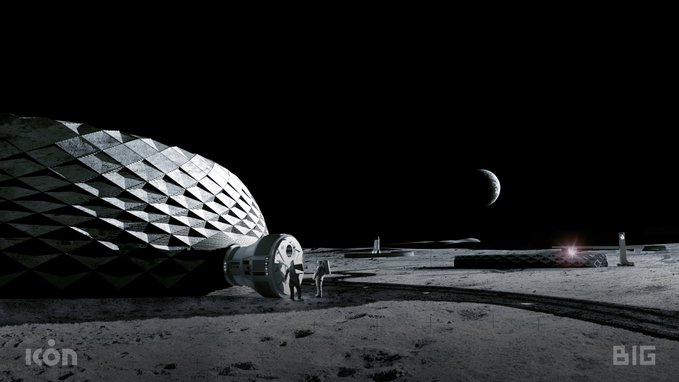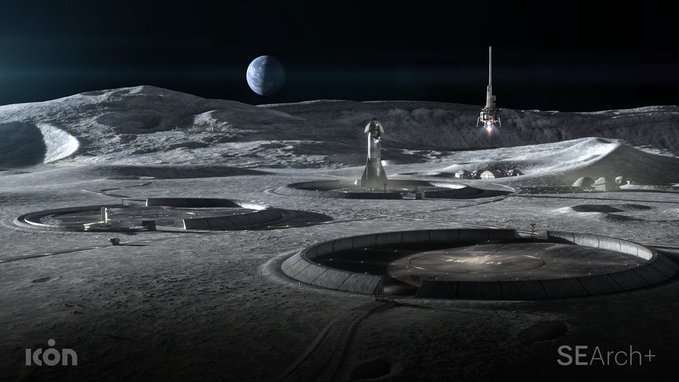
NASA wants to go to the Moon and Mars and stay there awhile.
And it’s contracted with Austin-based ICON to begin research and development of a space-based construction system.
ICON is known for its massive 3-D printers that can build a home in less than a day using a concrete substrate.
“Building humanity’s first home on another world will be the most ambitious construction project in human history and will push science, engineering, technology and architecture to literal new heights,” Jason Ballard, Co-founder and CEO of ICON, said in a news release. “NASA’s investment in space-age technologies like this can not only help to advance humanity’s future in space, but also to solve very real, vexing problems we face on Earth. We are honored to begin our research and development on ICON’s “Project Olympus” and the “Olympus Construction System.”
ICON received a government Small Business Innovation Research contract through the U.S. Air Force and funding from NASA to build the Moon settlement.

“To be successful in our future missions, we have to invest in new, cutting-edge technologies today,” Niki Werkheiser, NASA’s Game Changing Development program executive, said in a statement. The program is part of the agency’s Space Technology Mission Directorate. “Near-term research and development will help ensure we can expand building capabilities on other worlds when the time comes.
Through its Artemis program, NASA wants to establish a habitat on the Moon by the end of the decade.
“For a permanent lunar presence to exist, robust structures will need to be built on the Moon that provides better thermal, radiation, and micrometeorite protection than metal or inflatable habitats can provide,” according to ICON.
ICON is working on the project with NASA’s Marshall Space Flight Center in Huntsville, Alabama. “The new partnership builds upon technology ICON demonstrated during NASA’s 3D Printed Habitat Challenge in 2018,” according to ICON.
“We want to increase the technology readiness level and test systems to prove it would be feasible to develop a large-scale 3D printer that could build infrastructure on the Moon or Mars,” Corky Clinton, associate director of Marshall’s Science and Technology Office, said in a news statement. “The team will use what we learn from the tests with the lunar simulant to design, develop, and demonstrate prototype elements for a full-scale additive construction system.”
ICON is also working with BIG-Bjarke Ingels Group, renowned for its iconic international architecture and SEArch+ (Space Exploration Architecture), a company recognized on a global scale for their innovative ‘human-centered’ designs for space exploration.
